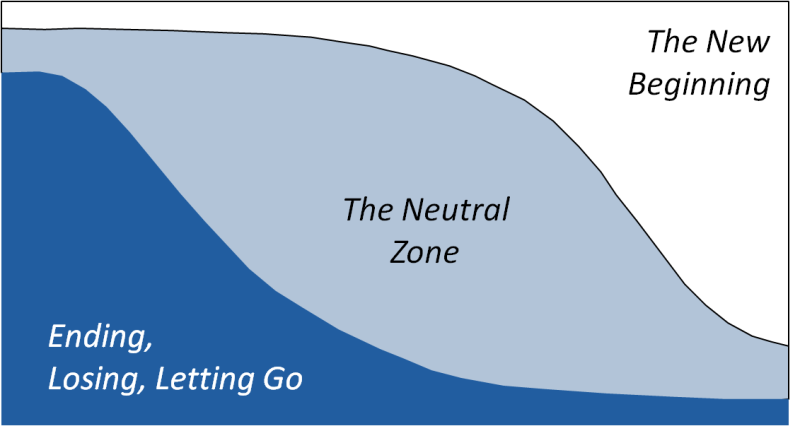It isn’t the changes that do you in, it’s the transitions. They aren’t the same thing. Change is situational: the move to a new site, the reorganisation of the roles on the team, the start of a new job in an unknown country.
Transition, on the other hand, is psychological; it is a three-phase process that people go through as they internalize and come to terms with the details of the new situation that the change brings about. The three-phase process entails:
1. Letting go of the old ways and the old identity people had. This first phase of transition is an ending, and the time when we need to deal with the ‘losses’.
2. Going through an in-between time when the old is gone but the new isn’t fully operational. William Bridges calls this time the “neutral zone”: it’s when the critical psychological realignments and repatternings take place. It’s an ambiguous, uncertain and uncomfortable place to be.
3. Coming out of the transition and making a new beginning. This is when we develop the new identity, experience the new energy, and discover the new sense of purpose that make the change begin to work.
Because transition is a process by which people unplug from an old world and plug into a new world, we can say that transition starts with an ending and finishes with a beginning.
In times of transition, what matters are tolerance for ambiguity, healthy relations, space and time to move into the new zone. Anyone who advertises a “life changing” method probably doesn’t have one.
(Extract adapted from William Bridges, Managing Transitions: Making The Most Of Change, Da Capo Press, 1991, 2003 with some personal reflections)



Pingback: Achieving Our Soul’s Desires | Transition In Motion